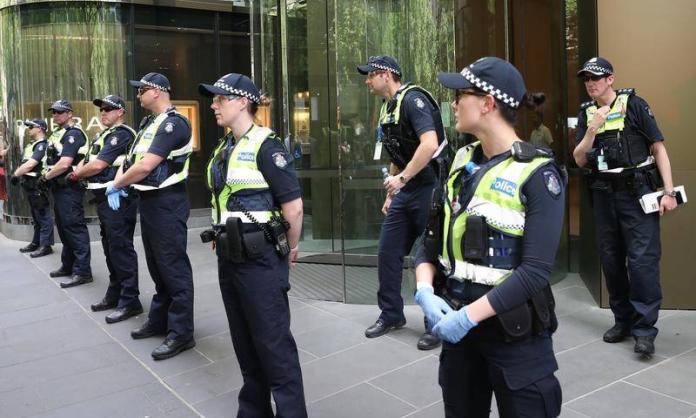The Victorian Labor government—which purports to be the most progressive in the country—oversees an increasingly punitive criminal justice system in which cops are handed money and powers with reckless abandon.
This month, the state parliament passed anti-protest laws that will hit environmental activists with up to $21,000 in fines or 12 months’ jail for obstructing logging operations. Meanwhile, the state-owned logging company VicForests, which in 2021 was exposed by the ABC as engaging in illegal logging activities, has faced no consequences for its unlawful environmental destruction.
New proposed laws will likewise give the police a slew of new powers. The Major Crime and Community Safety Legislation Bill does away with existing restrictions on undercover policing and expands the search and seizure powers of police, especially in relation to digital assets. A further draft bill expands police investigative powers, making it easier for them to obtain and execute search warrants.
On 18 August, the Victorian lower house passed amendments to existing legislation that grant greater powers to police and protective services officers to punish individuals for being in the vicinity of police stations for reasons other than assisting police. According to Nerita Waight of the Victorian Aboriginal Legal Service, “under these laws, someone standing outside a police station being rude to an officer could be fined over $900 if they don’t [leave]”.
These latest moves are a continuation of the law-and-order agenda that has characterised the Victorian Labor government since its election in 2014. Under Premier Daniel Andrews, Victoria Police has become the largest law enforcement agency in the country, measured by numbers. In 2016, Andrews signed onto the largest increase in police officers in the state's history in response to media-manufactured hysteria aimed at African migrants. On top of this, each year the government has committed to increasing police numbers.
Victoria has around 22,000 police personnel, considerably more than New South Wales, a state that has 1.4 million more people and three times the area.
In the ten years between 2011 and 2021, annual police spending in Victoria has more than doubled, an increase of more than $2 billion. These spending increases have funded a significantly more militarised police force, complete with semi-automatic rifles and an arsenal of weapons designed, as Chief Commissioner Graham Ashton told the Age in 2018, to deal with “demonstrations that go over the top”.
The arsenal of new anti-protest weapons includes projectile launchers, chemical weapons detonators and stinger grenades that release smoke, light and eight-millimetre pellets. In 2020, Victorian police got their hands on a fleet of advanced helicopters with long-range cameras. The latest addition to police weaponry was the announcement in December last year that access to tasers will be extended from just two of the police’s most militarised squads to every front-line officer.
Along with military-grade weapons and massive increases in personnel, the Andrews government has given the police the authority to shoot and kill reckless drivers. It has also introduced anti-association laws that allow police to impose bans on people as young as 14, which prevent them talking to or being around anyone who has been convicted of a criminal offence.
The Andrews government has also impeded legislation that would increase the age of criminal responsibility from 10 to 14, a reform that is intended to keep children out of the prison system and which would bring Victoria into line with the global average. This is also an important social justice measure: a majority of imprisoned children under the age of 14 in Victoria are Indigenous, and Indigenous youth are 7.3 times more likely to be detained than non-Indigenous youth. According to Amnesty International, in Australia Indigenous children make up 65 percent of imprisoned 10 to 14-year-olds, with 68 percent of these children not convicted of a crime.
The Andrews government’s commitment to a more militarised state has resulted in Victoria reaching its highest prison population relative to the population since 1896, with 109 prisoners for every 100,000 residents in 2021. The Andrews government has torn down and privatised public housing, and yet prison funding has grown by 96 percent between 2013 and 2019. More than half of the Indigenous people currently in prison, and 44 percent of all prisoners in Victoria, have not been found guilty of any offence but are locked up because of restrictions on the right to bail, courtesy again of repressive measures introduced or maintained by the Labor government.
While the Liberal Party whips up hysteria and moral panic around crime, in practice it’s Labor that has carried out a historic expansion of the repressive carceral system. In the process, Victorian Labor has victimised the most vulnerable in our society.








